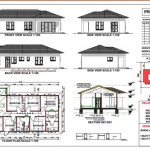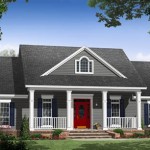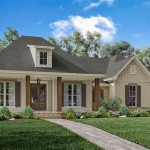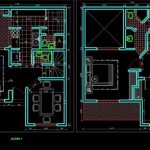Delving into the Timeless Elegance of Greek Revival Home Plans
Greek Revival architecture, known for its majestic columns, symmetrical facades, and enduring beauty, has left an indelible mark on American architecture. Greek Revival home plans embody the essence of this classical style, offering a harmonious blend of grandeur and comfort.
Origins and Influences
The Greek Revival movement emerged in the United States during the early 19th century, inspired by the rediscovery of ancient Greek architecture. Architects and designers were captivated by the simplicity, symmetry, and noble proportions of Greek temples, and they eagerly incorporated these elements into their own designs.
Essential Features of Greek Revival Home Plans
Greek Revival home plans typically share the following defining characteristics:
- Pedimented portico: A prominent portico with a triangular pediment supported by elegant columns.
- Symmetrical facade: A symmetrical arrangement of windows, doors, and other architectural elements.
- Cornice: A horizontal band at the top of the building, often adorned with dentils or other decorative details.
- Entablature: A horizontal band above the columns, consisting of an architrave, frieze, and cornice.
- Plantation shutters: Full-height shutters that cover the windows and add a touch of authenticity.
Types of Greek Revival Home Plans
Within the broad category of Greek Revival home plans, there are several variations:
- Antebellum: Southern-style plantations that typically feature large porticos, high ceilings, and intricate detailing.
- Temple-form: Designs inspired by ancient Greek temples, with a pedimented portico supported by four or more columns.
- Cottage: Smaller, more modest homes that incorporate Greek Revival elements, such as pediments and columned porches.
Materials and Construction
Traditional Greek Revival homes were typically constructed of wood or brick. Clapboard siding was commonly used, while columns and other architectural details were often made of plaster or wood.
Interior Design
The interiors of Greek Revival homes often reflect the classical influences of the exterior. Common features include:
- High ceilings: Creating a sense of grandeur and spaciousness.
- Moldings and trim: Adorning walls, doors, and windows with intricate details.
- Fireplaces: Surrounded by elaborate mantels and often featuring decorative details.
Benefits of Greek Revival Home Plans
Greek Revival home plans offer numerous advantages:
- Timeless appeal: The classical lines and proportions of Greek Revival architecture endure through changing trends.
- Flexibility: Greek Revival plans can be adapted to various sizes and budgets, from grand mansions to cozy cottages.
- Sense of history: These homes connect with the rich architectural heritage of the United States.
Whether you seek a stately mansion or a charming cottage, a Greek Revival home plan can provide a timeless and elegant foundation for your dream home.

House Plan 68466 Greek Revival Style With 2095 Sq Ft 3 Bed 2

Characteristics Of Greek Revival Home Plans

House Plan 98264 Greek Revival Style With 8210 Sq Ft 6 Bed

Greek Revival House Plans For A Colonial Style 4 Bedroom

Greek Revival And Gardens Period Homes

Plan 052h 0031 The House

Greek Revival House Plans For A Colonial Style 4 Bedroom

Greek Revival House Plans Became Extremely Popular Among Prosperous Southern Living Porch

Classical Greek Revival House Floor Plans Designs

19th 20th Centuries Greek Revival M Massachusetts Your Guide To The Witch City








